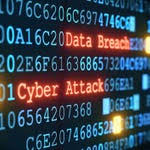New warnings issued due to cybersecurity threat of drones.
While drones offer a range of civilian and commercial applications, they also present a significant cybersecurity threat that has been largely overlooked. Recent reports highlight the urgent need for increased awareness and regulation regarding this growing menace.
Unregulated and Vulnerable:
One of the primary concerns with drones is their unregulated nature. In many countries, including Australia, there are currently no comprehensive laws or regulations governing the ownership and operation of drones. This lack of oversight has created a fertile ground for malicious actors to exploit these devices for their own nefarious purposes.
Hacking and Hijacking:
Drones can be easily hacked and hijacked by cybercriminals using various methods. These attacks can range from altering the drone’s flight path to taking complete control of its systems. Hackers can access the drone’s firmware through unsecured Wi-Fi connections or by exploiting vulnerabilities in its software.
Critical Infrastructure at Risk:
The cybersecurity threat posed by drones is particularly alarming when considering the potential impact on critical infrastructure. Drones can be used to gather sensitive information, disrupt operations, or even cause physical damage to vulnerable targets. For example, drones have been used to target airports, power plants, and other essential facilities.
Consequences and Mitigation:
The consequences of a successful drone cyberattack can be severe. Critical infrastructure could be compromised, privacy could be violated, and law enforcement efforts could be hampered. To mitigate these risks, it is crucial to implement comprehensive regulations and cybersecurity measures. This includes establishing clear licensing and registration requirements and mandating the use of secure technology.
Warning and Recommendations:
In light of these new warnings, it is important for individuals and organizations to take steps to protect themselves from drone cyberattacks. Here are some recommendations:
* Be aware of your surroundings: Pay attention to the presence of drones in your vicinity, especially near sensitive areas.
* Secure your devices: Ensure that your devices, including laptops, smartphones, and drones, are protected with strong passwords and antivirus software.
* Avoid using unsecured Wi-Fi connections: Drones can be hacked through unencrypted Wi-Fi networks. Use only secure connections when operating your drone.
* Report suspicious activity: If you witness suspicious drone activity, report it to the authorities immediately.
Conclusion:
The cybersecurity threat posed by drones is real and growing. The unregulated nature of these devices, combined with their vulnerability to hacking, creates a significant risk to critical infrastructure and national security. It is imperative that governments and industry stakeholders work together to develop and implement comprehensive regulations and cybersecurity measures to mitigate this threat. By taking proactive steps, we can protect ourselves and our communities from the potential consequences of drone cyberattacks.







